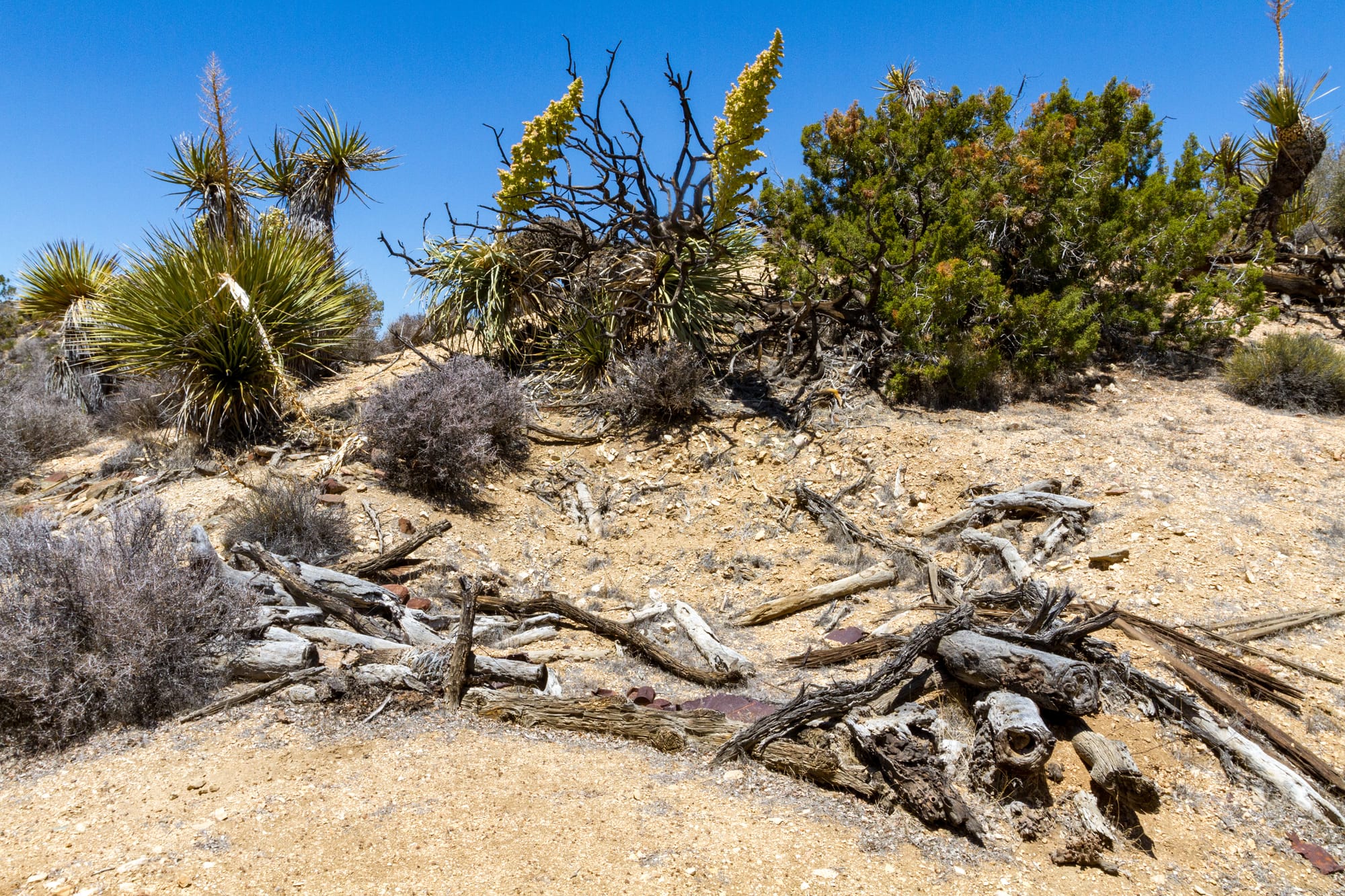If you are a fan of mining history and scenic desert hikes (and I think you probably are since you are reading this), you should stop by the Lost Horse Mine.
The Lost Horse Mine is well-known, but its history remains obscure to most. Few people hike the entire loop trail, missing out on a scenic trail with two other interesting prospects: the Optimist and the Gold Standard. Besides the Lost Horse's ten-stamp mill, the Optimist features an intriguing chimney, while the Gold Standard boasts the apparent remains of a cabin made from Joshua trees.



L: Engine at the Lost Horse Mill. C: Optimist Mine Camp. R: Joshua tree cabin remains at the Gold Standard.



